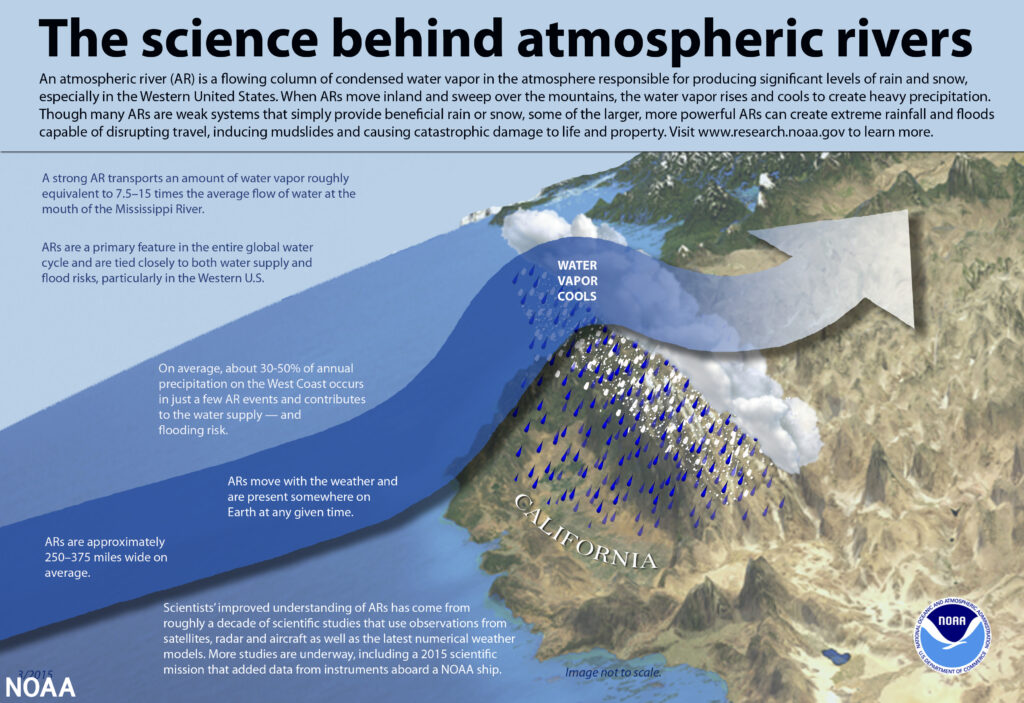The term seems to contain a contradiction. Rivers run along land not in the sky. But the term acts as a metaphor, comparing the behavior of lots of water vapour in the sky to the behavior of water in a river. In both cases, when there is a lot of water, that can be most useful to sustain life along the river and under the water-soaked sky. When there is a lot of water over a short period of time, there can be damaging consequences, whether the water runs along the river or drops from the sky.

The columns of vapor move with the weather, and when the atmospheric rivers make landfall, they often release this water vapor in the form of rain or snow. One example is the “Pineapple Express,” a strong atmospheric river that brings moisture from the tropics near Hawaii over to the U.S. West Coast.
As NASA notes, “Atmospheric rivers are the largest transport mechanisms of freshwater on Earth” and can be greater than ~2,000 km (1,245 miles) long, less than 1,000 km (620 miles) wide, and 3 km (1.8 miles) in depth. Here is an atmospheric river (the dashed oval) stretching from Hawaii to the California coast.

Some further ideas to explore on Atmospheric Rivers:
Where is the area nearest to you that is affected by Atmospheric Rivers (ARs)?
What time of the year is this area affected by ARs?
Can weather forecasts forewarn of impacts from ARs?
Sources:
“What are atmospheric rivers?” National Oceanic and Atmospheric Administration bit.ly/2QvrNLf
“Atmospheric Rivers,” NASA Global Hydrometeorology Resource Center (GHRC)
David A. Lavers and Gabriele Villarini, “The nexus between atmospheric rivers and extreme precipitation across Europe,” Advancing Earth and Space Science (7 June 2013). bit.ly/3HfKkTW


No comments yet, add your own below